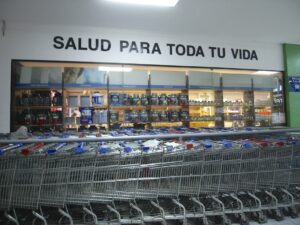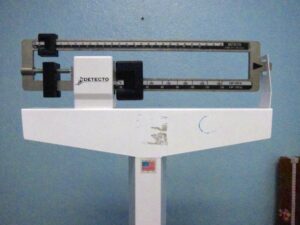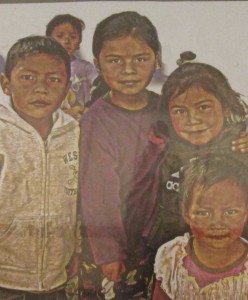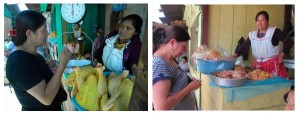Engaged Anthropology Grant: Emily Yates-Doerr
Emily Yates-Doerr is a postdoctoral fellow in the Faculty of Social and Behavioural Sciences at the University of Amsterdam. In 2007, while a doctoral candidate at New York University, she received a Dissertation Fieldwork Grant to aid research on ‘The Weight of the Body: Changing Ideals of Nutrition, Health and Fat in Guatemala,’ supervised by Dr. Emily Martin. In 2013, she received the Engaged Anthropology Grant to return to Guatemala and perform engaged activities on ‘Translation in Practice: Obesity, Fatness, and Dietary Health in Guatemala.’ Below, Dr. Yates-Doerr shares her experience working with the EAG and the workshops she conducted “discussing the social lives of nutrition programs and policies.”
Background to the Engagement Project
As reported deaths from heart attacks, strokes and diabetes in Guatemala have escalated, recent public health interventions have aimed to provide education about healthy eating and exercise patterns. My Wenner-Gren-funded fieldwork, which examined several of these interventions, explored how obesity science circulated within people’s lives.[i] Central to my research was the question of how Guatemalans who traditionally associated fatness with health and prosperity were making sense of education that linked weight to potentially dangerous metabolic conditions.

Frictions between diverse ideas of well-being were a focal point of the inquiry. During fieldwork I met diabetic patients who added sugar to their coffee because it was fortified with valuable nutrients; women with heart disease who avoided broccoli because they wanted to lose weight and were familiar with information about child health that linked vegetables and vitamins to (in this case desirable) weight gain; mothers, concerned about microbes in water and pesticides on vegetables, who fed their children chips and sodas to keep them from becoming sick; and so on. As different visions of health collided, the outcomes of interventions often differed from those anticipated by policy makers and educators.
I designed my engagement project to create a space within scientific and education centers to discuss the social lives of nutrition programs and policies. I wanted to share the results of my research with the scientists, nutritionists, and public health educators with whom I had worked, and who were themselves largely invested in an emerging genre of research labeled “translational research” which aims to make scientific results applicable to the population studied. Yet rather than simply report on my findings – a method of knowledge dissemination that I critique in my work as one-sided and, as a result, often ineffective – I organized workshops where various participants could collaboratively discuss challenges that arose through the practice of translation.
The Workshops
I drew from my fieldwork to prepare questions – a scaffold for our discussions – but the participants came with questions of their own.[ii] Many come from a tradition of policy research that values anthropological insight[iii] and they wanted to discuss how ethnographic sensitivity to knowledge production can help evaluate, sharpen, and respond to problems of translation they were encountering in their own research.
Do qualitative methods differ from ethnographic methods? How do you know when you’ve done enough research to validate your claims to authority? How can knowledge based in critical reflexivity be replicated, and if it cannot be replicated, how can it confidently be used to shape policies?

Like much of anthropology, some of the workshops’ most poignant moments arrived in unexpected asides. One of the meetings was attended by a Dutch nutrition scientist. Though I hold a US passport, I have been working in Amsterdam for the past two years. I mentioned in passing the differing beliefs held by the public health systems of the Netherlands and the US when it came to both childhood illnesses and hand sanitizer. She didn’t disagree with the assessment, but she was aghast that I had framed her country’s science in the language of belief.
“Belief? This sounds so pejorative” she said. But then she also noted, reflexively, that our group had just been speaking about Maya views on diet and health as beliefs—a realization that brought to our conversation an introspective pause as we considered the shortcomings of this term.
At the largest gathering of roughly 20 doctors and scientists in Guatemala City there was an extended discussion on the difficulty of crafting a useful public health indicator for hunger.
While everyone who voiced an opinion recognized the political utility of such an indicator – the millennium development goals, in which hunger’s elimination figures prominently, have garnered far more media and policy attention than their architects imagined – they were skeptical about the deployment of a rhetoric of science for such unabashedly political ends.
This raised debate between policy and laboratory scientists about what, if anything, they might be able to say about health. Yet even those nutrition scientists whose research was technical – focused, for example, on the chemical binding properties of iron – recognized that the questions deemed worthy of funding, and the acceptance and dissemination of their research were interwoven into political agendas, muddling clear delineations between science and culture. (And there, of course, is a key lesson imparted by the critical reflexivity of anthropology).
I shared with the workshop participants something I had learned during my fieldwork in the highlands, where many Guatemalans hold fatness to be healthy. There is a tendency among (so-called) educated Westerners to hear this and dismiss it as provincial, erroneous knowledge—the backwards thinking of someone who does not understand the true consequences of weight gain. But this dismissal overlooks a regional distinction between fatness (a desirable sign of prosperity and abundance) and obesity (a measure of weight, that does, indeed, often correlate with illness). In this sense, those who held that fatness was healthy were not wrong;[iv] they were instead engaged in practices of health that differed from those of the (apparently not so) knowing Westerner.
The participants were intrigued by this finding. After all, a plan to combat fatness might easily come across as nonsensical to those for whom fatness is desirable—for whom health cannot be defined by measurable variables.
Several researchers were running into obstacles in their process of collecting data on eating and health. One group was studying how Indigenous beliefs impacted the consumption behavior of post-partum women and was investigating whether women were eating caliente or frio foods after giving birth.
Ethnographic literature makes clear that Indigenous classification of foods correlates to a situated quality of eating and not to a measurable temperature of food. But when coding their data, which had been translated into Spanish and would eventually become translated into English, the scientists could not easily discern whether the reference to caliente or frio was a reference to a quality or temperature. We discussed the problems of coding across languages—of forcing heterogeneous meanings into someone else’s lingua franca, be it Spanish, English or the language of measured calculations.
By the end of the workshop, the questions we had started with about the reliability of ethnographic methods had reversed upon themselves. Now at stake was the question of how to do good quantitative research given that translations do not hold stable.

Translational Competency
During the workshops we encountered several situations in which information does not move smoothly from site to site, but becomes transformed as it travels. I want to offer a concluding story that offers a tentative idea of where to go from here.
It was the end of the day. I had accompanied a small group of scientists to a meeting of rural Mam women who had gathered to discuss things they found important, or beautiful, or challenging in their lives.
On other days the scientists collected clear plastic vials of spit, later analyzing this for a biomarker (cortisol) of what many health professionals call “stress.” But the scientists knew that these women did not use this concept and they were curious about the local meanings of the biomarker. The day’s meeting was a preliminary attempt to learn about the perspectives of the women.
As we walked back to the office along the busy road from the bus terminal, I asked the lead scientist what they were hoping to find. She said she wasn’t sure, but three small babies had recently died in a community where they were carrying out their study, and they wanted to develop a richer language for communication so as to better understand what might have gone wrong.
In particular, they wanted to know more about why the women, who largely depended upon midwives or received no formalized prenatal care at all, were afraid of the regional hospital. Many saw it as a space of death and the researchers wanted to better understand the women so that eventually they might more effectively encourage them to seek medical care while also helping the hospital to provide them with better services.
It is a testament to the power of anthropological insight well beyond the domain of the field of anthropology that the scientists recognized the relevance of narrative and cultural perspective to their work. Still, attention to translation in meaning, which is the terrain of cultural competency, can come with sometimes profound limitations insofar as culture, like meaning itself, is treated as “a reified, essential, static thing” (Taylor 2003:160)— a treatment that can elide, rather than engage with, the realities of others.
As Helena Hansen and Jonathon Metzl eloquently argue in their work on structural competency, a focus on difference in culture may not only fail to ameliorate stigma but may bolster the institutional forces that give it life. [v] In this case, I cautioned the scientists that concern for belief might divert attention – and resources – away from the material stratifications through which Guatemala’s landscape is organized. It struck me that beginning research out of a concern that women were not going to hospitals was itself a disquieting place to start. Why not instead ask why midwives and home deliveries are not better supported? Or ask what would change by taking seriously the women’s views that hospitals were a place of death and consider that they might know a better way?
My question was greeted with interest. But then we stumbled into another site of rupture. Fortification and nutrition campaigns are a recent occurrence in Guatemala, dating back no further than a generation or two. Many are directed at pregnant and lactating women, who are understood in public health terms as holding the keys to the doors of human capital. Emerging research suggests that when these campaigns are successful babies will be born much bigger in size. From the standpoint of public health nutrition this outcome is wonderful, just what they want— except for a caveat in which the health of nutrition is undermined by the specter of death.
You see, small women can certainly safely deliver large babies without needing to travel to hospitals, but the risks involved might very well increase. And the same researchers who have promoted the use of fortification to treat dietary deprivations in the past are growing suddenly fearful about what happens when women who measure as stunted in height give birth to babies whose size and shape has been buoyed by these nutrients.
“Genocide at an unimaginable scale” is how one scientist referred to the potential consequences of improving health in a way that neglected to consider its distribution across generational time. Even skilled midwives become weakened by these sclerotic translations.

Continuous Translation
In keeping with the findings of a rich tradition of anthropological scholarship on global, environmental, and health translations,[vi] my workshops emphasized the need not just for cultural competency – the respectful and attentive translation of meanings from site to site – but for translational competency, which entails the ceaseless work of staying with transformations in structures, and resources, and temporality itself.
A few times participants reframed the examples of the translation transformations I had highlighted as misunderstandings. But the idea that knowledge can ever be understood presumes there to be a stable and correct version of information to be known. Meanwhile the exchanges I drew attention to did not so clearly have a singular right or wrong valuation.
Women who give their children Pepsi because boiled water is expensive and tap water might cause diarrhea do not do so out of ignorance. In a region where stomach cancer among children abounds, eating chips instead of vegetables washed in pesticide run-off may not be a decision made from poor communication but a difficult trade-off of one kind of sickness for another. What is at stake is not – or not only – an exchange of correct meanings, but an exchange of resources.
Many of the scientists who participated in my engagement project were invested in “translational research” and cared about the practical results of their studies. Their work intersects in interesting ways with the Wenner-Gren’s commitment to engaged anthropology—a commitment made material through the development of the grant that made my project possible (see also Low and Merry 2010). But if there’s something other disciplines might learn from the longstanding attention to translation within our field, it is that translation is not a determinate process.
As the conversations that unfolded during my return to Guatemala illustrated, the work of engaging in translational research entails staying close not only to the jagged edges of meanings as they shift from site to site, but also to these meanings as they transform into practices, and to these practices as they endure or fall apart with time. The process is not linear (from the proverbial bench to bedside) but entails dialogue, and rupture, and silence, and further dialogue.
NOTE: This blog has been developed into an article focused on the process of engaged anthropology. See: Yates-Doerr, Emily. 2014. “Obesity Science and Health Translations in Guatemala: Engagement in Practice.” Anthropology Now. 6 (1) 3-14.

__________________
Further Reading:
Adams, Richard N.
2010 Social anthropology in INCAP. Food & Nutrition Bulletin 31(1):152-160.
Low, Setha M., and Sally Engle Merry
2010 Engaged Anthropology: Diversity and Dilemmas: An Introduction to Supplement 2. Current Anthropology 51(S2):S203-S226.
Metzl, Jonathan, and Helena Hansen
In Press Structural Competency: Theorizing a New Medical Engagement with Stigma and Inequality. Social Science & Medicine SSM-D-12-03037R1.
Mol, Annemarie, and John Law
2004 Embodied Action, Enacted Bodies: the Example of Hypoglycaemia. Body & Society 10(2):43-62.
Scott, Joan Wallach, Cora Kaplan, and Debra Keates
1997 Transitions, environments, translations : feminisms in international politics. New York: Routledge.
Taylor, Janelle S.
2003 The Story Catches You and You Fall down: Tragedy, Ethnography, and “Cultural Competence”. Medical Anthropology Quarterly 17(2):159-181.
[i] For their support back in 2007 when I was writing the original Wenner-Gren grant, and still today, I thank Emily Martin, Tom Abercrombie, Rayna Rapp, Sally Merry and Renato Rosaldo and the anthropology department at NYU. I also thank my current colleagues at the Health Care and the Body Research Group at the University of Amsterdam.
[ii] Questions included: To what extent can scientists participate in the translation of their research about metabolic health into media reports and public health policy? How might health care workers address negative health consequences of metabolic illness without presuming that only slender bodies are healthy bodies? Can education about eating be developed in such a way that it avoids placing the burden of responsibility for health on individuals? What can educators do to acknowledge the role that women play in feeding their families without suggesting that dietary health is exclusively women’s domain? In what ways might strong and effective national dietary health curricula remain sensitive to nuances in Mayan terminologies? How can educators stay engaged with the effects of their policies and protocols about healthy eating?
[iii] See Adams (2010).
[iv] It should be noted that even from a more traditionally-biomedical repertoire of health they might not be wrong, after all. See http://www.digitalnewsrelease.com/?q=jama_3867.
[v] For more see Metzl and Hansen (In Press).
[vi] In a prescient volume edited by Joan Scott, Cora Kaplan and Debra Keates, Anna Tsing usefully describes translation as a continual negotiation, an “irregular haphazard process in which terms are appropriated from one context to another than then used to do different work” (1997). Annemarie Mol, who directs my postdoc, has also for some time illustrated the contingency of boundaries between meanings and bodies, machines and gestures (see especially Mol and Law 2004).